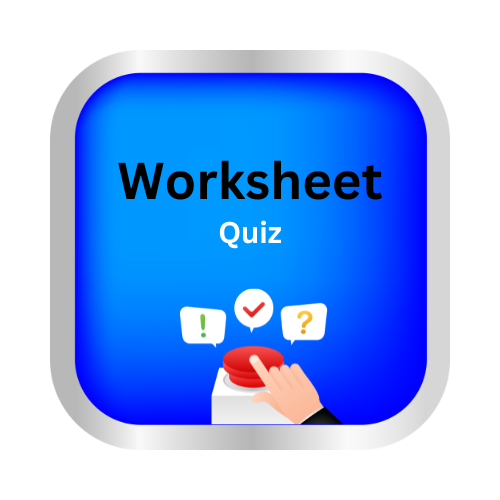Add, subtract, multiply, and divide
key notes :
1. Addition
- Definition: Combining two or more numbers to get a total.
- Symbols: The plus sign (+) is used for addition.
- Example: 4+3=7
- Properties:
- Commutative Property: Order does not matter (e.g., 3+5=5+3).
- Associative Property: Grouping does not matter (e.g., (2+3)+4=2+(3+4)
- Identity Property: Adding zero does not change the number (e.g., 7+0=7).
2. Subtraction
- Definition: Finding the difference between two numbers by taking one number away from another.
- Symbols: The minus sign (−) is used for subtraction.
- Example: 9−5=4
- Properties:
- Not Commutative: Order matters (e.g., 5−3≠3−5).
- Identity Property: Subtracting zero does not change the number (e.g., 6−0=6).
3. Multiplication
- Definition: Adding a number to itself a certain number of times.
- Symbols: The multiplication sign (×) is used for multiplication.
- Example: 4×3=12 (This means 4+4+4=12)
- Properties:
- Commutative Property: Order does not matter (e.g., 2×3=3×2).
- Associative Property: Grouping does not matter (e.g., (2×3)×4=2×(3×4)).
- Identity Property: Multiplying by one does not change the number (e.g., 5×1=5).
- Zero Property: Multiplying by zero results in zero (e.g., 8×0=0).
4. Division
- Definition: Splitting a number into equal parts or groups.
- Symbols: The division sign (÷) is used for division.
- Example: 12÷4=3 (This means 12 is split into 4 equal groups of 3).
- Properties:
- Not Commutative: Order matters (e.g., 12 ÷ 4 ≠ 4 ÷ 12 ).
- Identity Property: Dividing by one does not change the number (e.g., 7÷1=7).
- Zero Property: Dividing zero by any number results in zero (e.g., 0÷5=0), but division by zero is undefined.
Learn with an example
Add: 34396 and 58124.
Solution:
Step I: Add the ones. 6 + 4 = 10 ones = 1 ten and 0 one. Write 0 in one’s column and carry 1 to the tens column.
Step II: Add the tens. 9 + 2 + 1 (carry over) = 12 tens. 12 tens = 1 hundreds and 2 tens. Write 2 in the tens column and carry 1 to the hundreds column.
Step III: Add the hundreds. 3 + 1 + 1 (carry over) = 5 hundreds. Write 5 in the hundreds column.
Step IV: Add the thousands column. 4 + 8 = 12 thousands. 12 thousands = 1 ten thousand and 2 thousands. Write 2 in the thousands column.
Step V: Add the ten thousand column. 3 + 5 + 1 (carry over) = 9 ten thousands. Write 9 in ten thousand columns.
Adding 5-digit Numbers with Regrouping
Hence, 34396 + 58124 = 92520
| 1 11 |
| 34396 |
| 58124 |
| 92,520 |
📗Multiply.
95 x 7=___________
- Multiply the ones. Remember to carry over.

- Multiply the tens. Multiply 9 times 7, then add 3.

- The product is 665.
📗 Multiply.
314 x 2=_____
- Multiply the ones.
- 314 x 2 =8
- Multiply the tens.
- 314 x 2 = 28
- Multiply the hundreds.
- 314 x 2 = 628
- The product is 628.
📗 Subtract.
798-721=____
- Subtract the ones. Subtract 8–1.
- 798-721=1
- Subtract the tens. Subtract 9–2.
- 798-721=77
- Subtract the hundreds. Subtract 7–7.
- 798-721=077
- The difference is 77.
🥏 Dividing a 3-digit number by a 1-digit number
You can use long division to divide larger numbers, too. Follow the steps below to divide a 3-digit number by a 1-digit number. Try it with 769÷3.
Write the problem using a long division symbol.
To divide, start with the digit in the hundreds place. Find how many times 3 goes into 7.
It goes in 2 times. Write the 2 above the 7. Multiply 3×2=6. Write the 6 below the 7. Subtract 7–6=1. There is 1 left over. Next, bring the 6 down from the tens place to make the number 16. Find how many times 3 goes into 16.
It goes in 5 times. Write the 5 above the 6. Multiply 3×5=15. Write the 15 below the 16. Subtract 16–15=1. There is 1 left over. Then, bring down the 9 from the ones place to make the number 19. How many times does 3 go into 19?
It goes in 6 times.Write the 6 above the 9.Multiply 3×6=18. Write the 18 below the 19.Subtract 19–18=1.There is 1 left over.We have 1 left over. There are no more digits to divide, so 1 is a remainder. That means 3 doesn’t go into 769 evenly. We write the remainder as R1.
So, 769÷3=256 R1!
Let’s practice!🖊️

